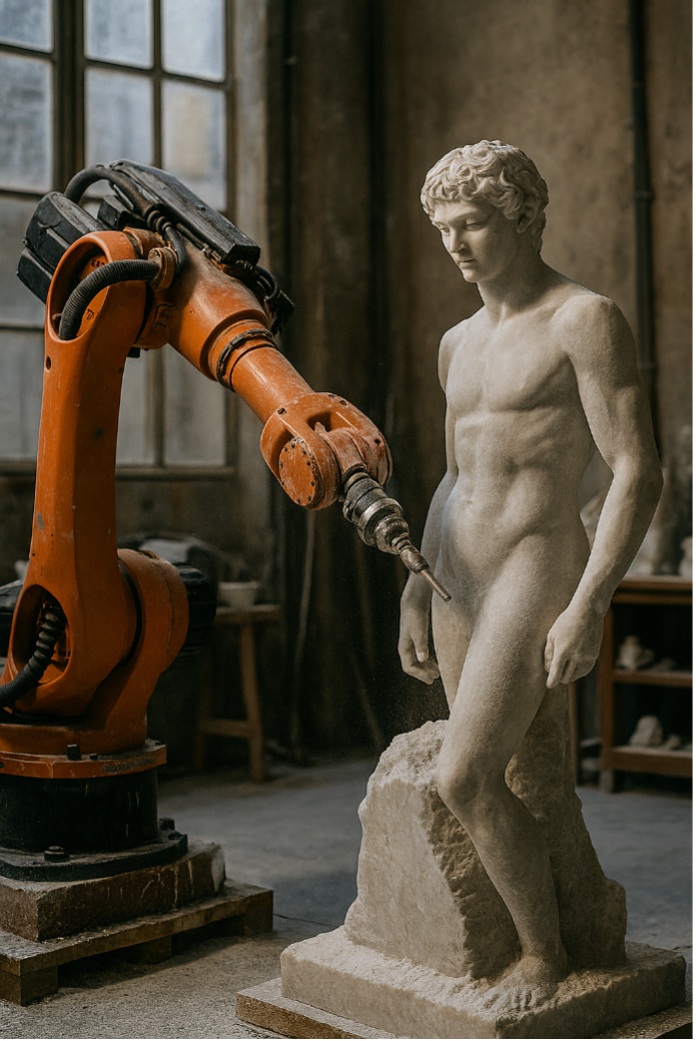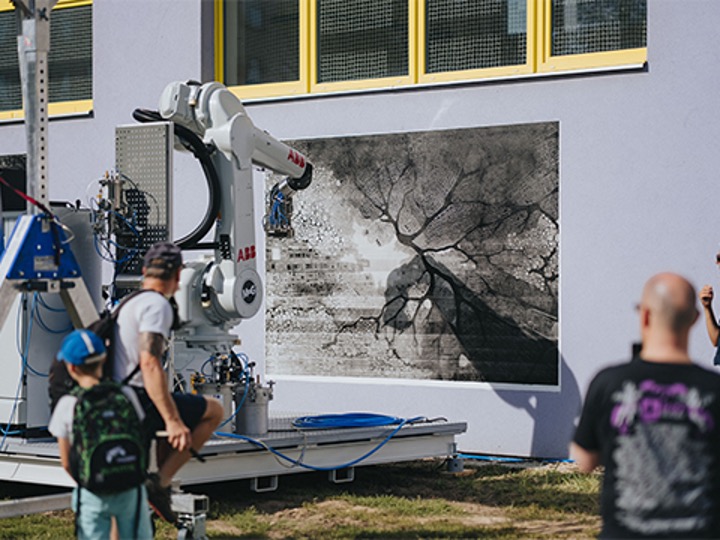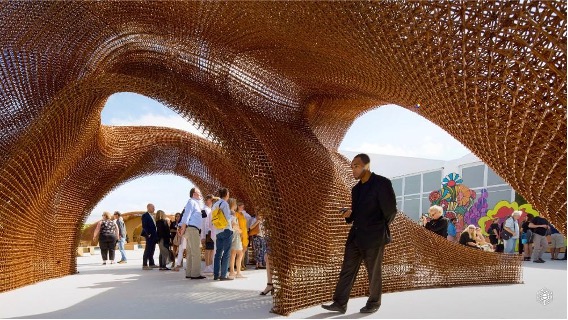Art and robotics no longer belong to separate worlds. In recent years, sculptors and digital art studios have begun using refurbished industrial arms to transform materials with millimetric precision. From marble to wood, these robots have moved beyond the factory floor and into the artist’s workshop, ushering in a new era: robotic art.
This convergence of art and technology stems from a desire to merge creativity with precision. Artists such as Joris Laarman Lab, Daniel Widrig, and Minimaforms work with refurbished KUKA and ABB robots to create sculptural forms that would be impossible to achieve by hand. Originally designed for tasks like welding or polishing, these systems now carve, print, or mold materials using adapted tools and parametric control software.
Refurbished robots offer a compelling alternative, especially for artists and universities working with limited budgets. They can cost up to 70% less than new models, integrate seamlessly with CAD/CAM and Grasshopper software, and deliver high repeatability for delicate processes. Beyond the technical advantages, they also promote sustainability by repurposing machines in new cultural contexts.
Robotic art is already producing remarkable results. In one example, ABB IRB 6700 arms sculpt marble blocks based on 3D models, creating generative stone sculptures. In another, KUKA KR16 robots manipulate lights and mirrors in response to audience movement, forming interactive installations. Refurbished arms have even been transformed into kinetic sculptures that move in sync with music or sound.
But robotic art is more than just technique—it invites reflection. Where does the human creator end and the machine begin? Each robotic gesture is an extension of the artist’s digital intent, yet also a collaboration between the organic and the mechanical. Refurbished robots allow art to evolve without losing its soul. They open the door to creators who want to explore the future of artistic expression using the tools of today’s industrial world.



